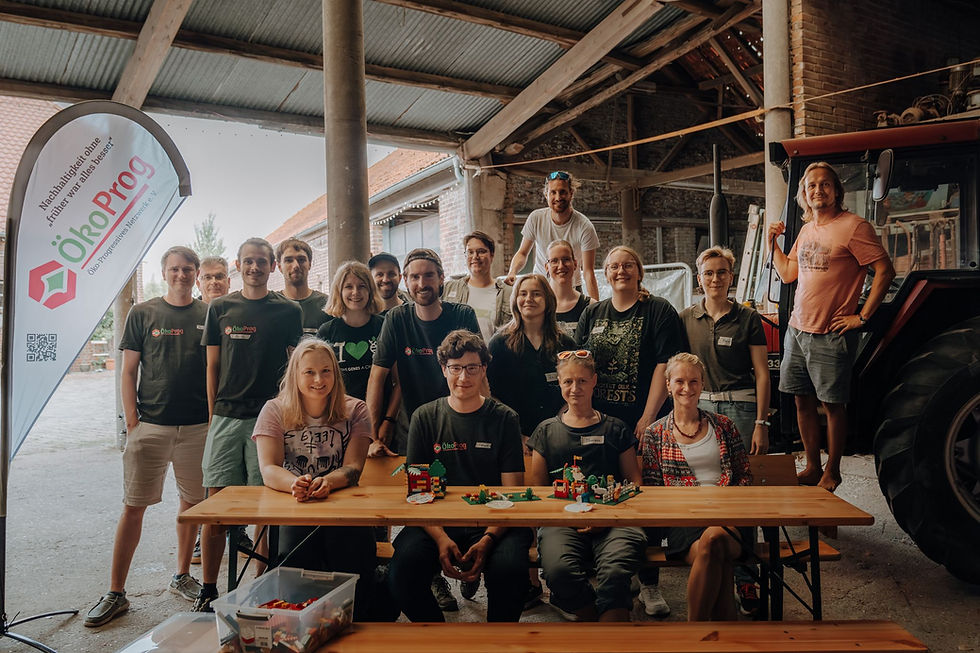Inside Farmer Clusters
- Taskscape Associates
- Sep 25
- 4 min read
Updated: Nov 28
A final project event shares lessons from Europe and the UK...
On the 24th September 2025, the project hosted a final webinar, 'Inside Farmer Clusters: Lessons from Europe and the UK', from coordinating partner the James Hutton Institute - reflecting on five years supporting biodiversity through piloting collaborative farming approaches. We're pleased to share that the webinar was well attended with over 70 stakeholders joining, the majority of them external.

As H2020 FRAMEwork approaches its conclusion, this webinar provided a timely opportunity to share experiences from our 11 pilot Farmer Clusters established across Europe, from southern Spain to Estonia.
Project coordinator Dr Graham Begg from the James Hutton Institute opened the session by emphasising how FRAMEwork has been about 'supporting biodiversity in farming, but doing so by working with farmers'.
The Evolution of Farmer Clusters
Neville Kingdon from the Game and Wildlife Conservation Trust (GWCT) provided historical context, explaining how the 'Farmer Cluster' concept developed in England in the early 2010s. "The pilot was considered successful, and the government set out funding to support and expand the concept," he noted, describing how the initiative has now grown from five pilot Clusters managing areas up to 100 square kilometers to encompassing environmental farmers' groups - sometimes termed 'SuperClusters' -covering nearly 315,000 hectares - approximately 4% of England's farmed areas.
Diverse Experiences Across Europe
The webinar featured presentations from facilitators across FRAMEwork's Farmer Clusters, each highlighting unique approaches and achievements shaped by local contexts:
Czech Republic: the Velké Hostěrádky cluster transformed nine farms managing over 2,500 hectares into "living laboratories". Key achievements included installing bird boxes, creating a 7km biodiversity path now featured on national maps, and establishing an 8-hectare agroforestry system on erosion-prone land.
Spain: The Cazadores de Aguilar cluster brought together farmers and hunters around restoring life to olive groves. Ground cover establishment between olive trees has proven beneficial for erosion control and biodiversity, challenging cultural norms about "good" olive grove management.
Estonia: The Kanepi kihlkund Farmer Cluster of 14 farmers managing over 3,000 hectares focused on wild pollinators and wildflowers. The project recorded over 75 bird species and identified more than 60 species of wild bees, while hosting educational events with local schools, and on new EU CAP requirements.
Learnings from Beyond FRAMEwork
The webinar also featured an external example of innovative private sector engagement. Fiona Torrance from GWCT Scotland presented on the FAB (Farming, Arable, Biodiversity) Cluster, which emerged from the earlier Interreg-funded Partridge project and is now funded through PepsiCo's Positive Agriculture Output Fund.
This cluster demonstrates an alternative funding model, with six farms spread across Fife and Angus testing measures and preparing for Scotland's next round of agri-environment schemes. The inclusion of this externally-funded cluster highlighted potential pathways for sustainability beyond project funding, with FRAMEwork's Clusters having achieved collaborations that could be built upon in Europe to explore innovative next-stage partnerships.
Tools and Resources for Scaling Impact
The FRAMEwork project developed several resources to support Farmer Clusters beyond the project's lifetime:
Guidelines in eight languages covering topics from starting a cluster to biodiversity monitoring, with over 1,200 views of the English versions to date
Landscape Leaders training course - a free online curriculum for farmers and advisors interested in biodiversity-friendly farming
FEAST software - a decision support tool allowing farmers to assess habitat suitability, plan interventions, and access monitoring guidance
Sustainability assessment tool - a practitioner-friendly questionnaire providing actionable steps for improving farm sustainability
Rachel Nichols from GWCT presented these training materials, emphasising their accessibility through the project's information hub, Recodo.
Mixed but Promising Biodiversity Outcomes
The biodiversity monitoring results from the FRAMEwork Clusters showed variable responses across different sites. "Some Farmer Clusters demonstrated benefits for particular taxa," the research team explained, noting that Austrian clusters focusing on vegetation diversity showed positive impacts on butterfly abundance. Additionally, pest-controlling kestrel populations were enhanced in the Czech cluster, and an increase in corn buntings and pollinators observed in the project's Scottish cluster following implementation of measures.
However, the research team also noted divergent results in some areas and emphasised that a three to four-year monitoring period limits assessing longer-term trends: "Our results demonstrate that Farmer Clusters can make a difference, but they also highlight that wider biodiversity recovery will require time, greater landscape scale coordination and strategic alignment."
Social Transformation and Identity Shifts
Research revealed significant social outcomes within the FRAMEwork Clusters, with farmers shifting roles from business operators to environmental stewards, community leaders, and educators. As Dr. Eszter Kelemen noted: "Farmer Clusters are more than just groups of farmers. They are evolving communities, learning communities, and their success depends on trust, shared learning and local relevance."
Looking Ahead
Discussion about the future revealed mixed prospects for Cluster continuation. Claire from the Cranborne Chase cluster confirmed their 22 members managing 10,000 hectares are "very much committed to building on what they've done," while Marco Bayer from Luxembourg's Ramborn Cluster noted funding challenges for maintaining facilitator support post-FRAMEwork.
The webinar highlighted a critical transition point for European Farmer Clusters - from project-funded initiatives to self-sustaining movements. The inclusion of the privately-funded FAB cluster example suggests one potential pathway, though as Dr Begg concluded, continued success will require addressing funding gaps and maintaining the networks and knowledge exchange that H2020 FRAMEwork has fostered.
This final project event was part of a series developed around the project's information hub Recodo - a knowledge, action and legacy platform. For more information on resources for Farmer Clusters, please visit www.recodo.io.



